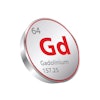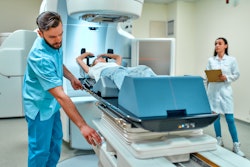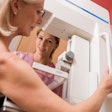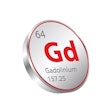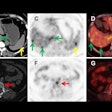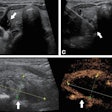PORTLAND, OR – Consumer-grade displays can function adequately for remote diagnostic radiology workstations, but it’s unclear if they are more cost-effective than diagnostic-grade displays over the long-term, according to research presented at the Society for Imaging Informatics in Medicine (SIIM) annual meeting.
The Cleveland Clinic’s imaging informatics group launched a program during the COVID-19 pandemic to provide their institution’s radiologists with consumer-grade displays to support hybrid work. Katie Hulme, a clinical diagnostic medical physicist, shared their experience in a scientific session at the Oregon Convention Center.
“The deployed [consumer-grade displays] did perform within specifications but with more variability and higher failure rates relative to diagnostic-grade displays,” Hulme said. “The additional support for these [workstations with consumer-grade displays] I would say is non-negligible, suggesting that post-deployment operational expenses may offset initial cost savings.”
 Katie Hulme of the Cleveland Clinic.
Katie Hulme of the Cleveland Clinic.
Commercial-grade high-resolution displays are available off-the-shelf today that meet or exceed the minimum technical specifications recommended for displays used for diagnostic interpretation. These displays can also be purchased at a significantly lower price point than diagnostic-grade displays, with the potential to reduce the initial cost of a workstation by approximately 55%, according to Hulme.
After an initial pilot study performed in 2022, a decision was made by the Cleveland Clinic to utilize commercial-grade-displays that could be deployed at radiologists’ homes for occasional home work. Radiologists who were fully remote still received a standard diagnostic-grade six-megapixel display.
Over a 12-month period, the organization sent out 52 workstations with commercial-grade displays and about 30 workstations with diagnostic-grade displays, she said. The organization elected to use Dell G3223Q, a HDR600-certified consumer-grade display, along with a 1Display Pro handheld photometer (X-Rite), and PerfectLum4 calibration software (Qubyx).
The monitors were calibrated to the DICOM Gray Scale Standard Display Function (GSDF) with a white point set to 375 cd/m2. Verification testing was performed on each display prior to deployment for uniformity, visual integrity, and GSDF conformance.
Quality control
On a monthly basis, users were expected to perform quality control (QC) that included GSDF calibration of the display in picture-by-picture mode. The calibration software treated the left and right sides of the display as two displays. Next, the radiologists were asked to visually assess the TG-18QC test pattern. The entire QC process takes approximately 10 minutes for the radiologists to complete.
After installation of the 52 workstations, the researchers wanted to determine if the radiologists were performing the mandated monthly QC process and following up on test failures. They also wanted to find out how often the QC failed and if the backlight was stable enough to maintain compliance over time. In addition, they sought to compare the performance of these displays with diagnostic-grade displays.
To track this, the researchers exported QC test histories from all remote workstations for analysis. They also initiated compliance tracking in June 2024 for all of these displays. Reports were extracted monthly from the PerfectLum server to flag workstations that were overdue for QC and/or were failing QC, according to the group.
Next, they calculated maximum absolute deviation from the GSDF and deviation from the target white point for each data point. For each metric as a function of display model, the researchers determined average and standard deviation, weighted by the number of data points per display.
Study results
The maximum absolute deviation from GSDF was approximately 11% for consumer-grade displays, compared with 3-4% for diagnostic-grade displays.
“It is worth noting that in general, it’s recommended for displays used for primary interpretation that compliance with GSDF is maintained within 10% maximum absolute deviation,” she said.
Failures in GSDF compliance – defined as instances where maximum absolute deviation with GSDF is greater than 10% -- occurred in 20% of the time for consumer-grade display, compared to 1.5% for recently deployed diagnostic-grade displays
Consumer-grade displays were able to maintain a white point of 375 cd/m2 over the evaluated period, but with higher variability than diagnostic-grade displays, Hulme said.
As for user compliance with performing the QC process, the researchers observed that the number of consumer-grade displays flagged for QC not being performed increased from 14% to 32% over six months. What’s more, failures encountered during routine quality control were not identified and remedied with subsequent calibration by the user in 10-15% of cases.
As a result, process improvements such as improved documentation and communication as well as implementation of automated emails were needed, Hulme said.


